Maozhong Song
Machine Learning-Based 3D Channel Modeling for U2V mmWave Communications
Sep 05, 2021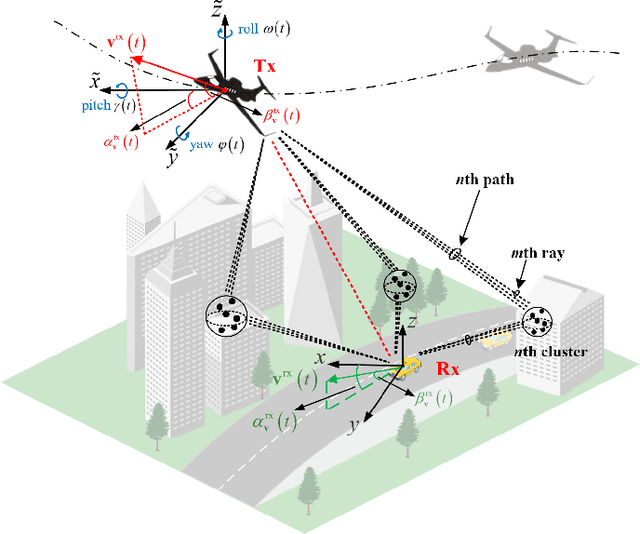



Abstract:Unmanned aerial vehicle (UAV) millimeter wave (mmWave) technologies can provide flexible link and high data rate for future communication networks. By considering the new features of three-dimensional (3D) scattering space, 3D velocity, 3D antenna array, and especially 3D rotations, a machine learning (ML) integrated UAV-to-Vehicle (U2V) mmWave channel model is proposed. Meanwhile, a ML-based network for channel parameter calculation and generation is developed. The deterministic parameters are calculated based on the simplified geometry information, while the random ones are generated by the back propagation based neural network (BPNN) and generative adversarial network (GAN), where the training data set is obtained from massive ray-tracing (RT) simulations. Moreover, theoretical expressions of channel statistical properties, i.e., power delay profile (PDP), autocorrelation function (ACF), Doppler power spectrum density (DPSD), and cross-correlation function (CCF) are derived and analyzed. Finally, the U2V mmWave channel is generated under a typical urban scenario at 28 GHz. The generated PDP and DPSD show good agreement with RT-based results, which validates the effectiveness of proposed method. Moreover, the impact of 3D rotations, which has rarely been reported in previous works, can be observed in the generated CCF and ACF, which are also consistent with the theoretical and measurement results.
Map-based Channel Modeling and Generation for U2V mmWave Communication
Apr 08, 2021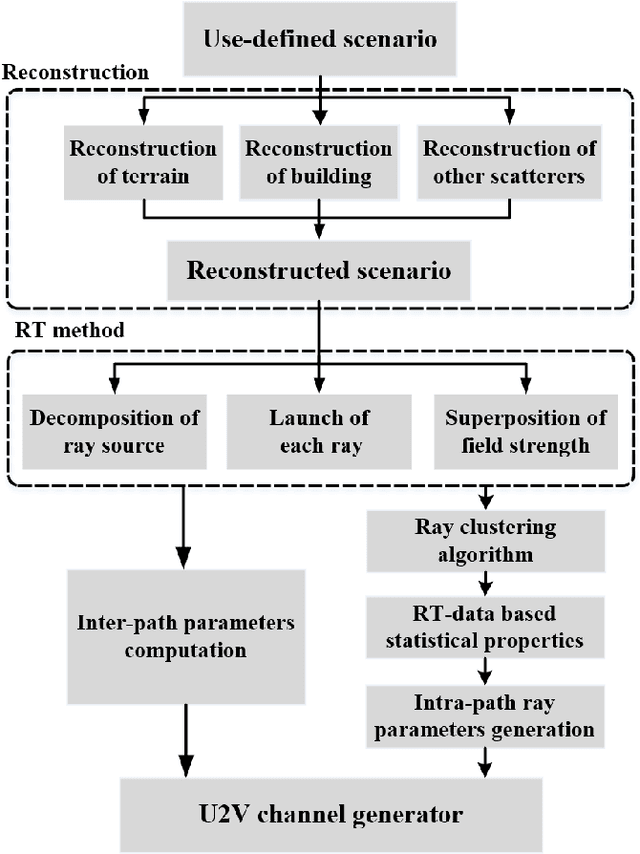
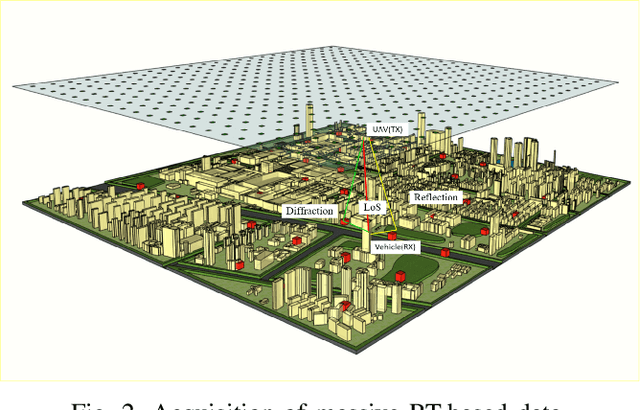
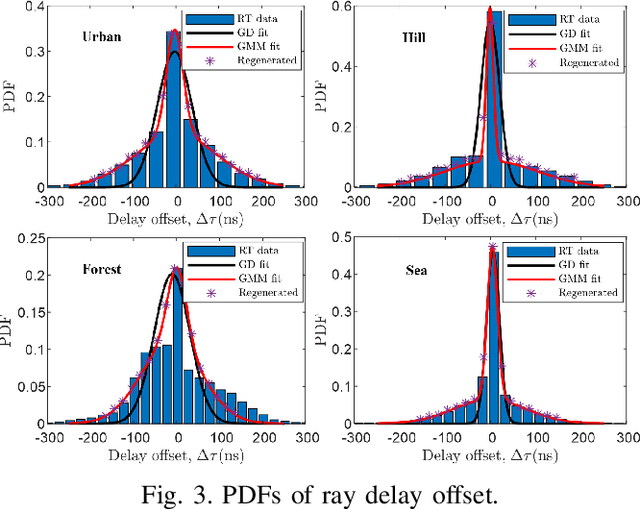
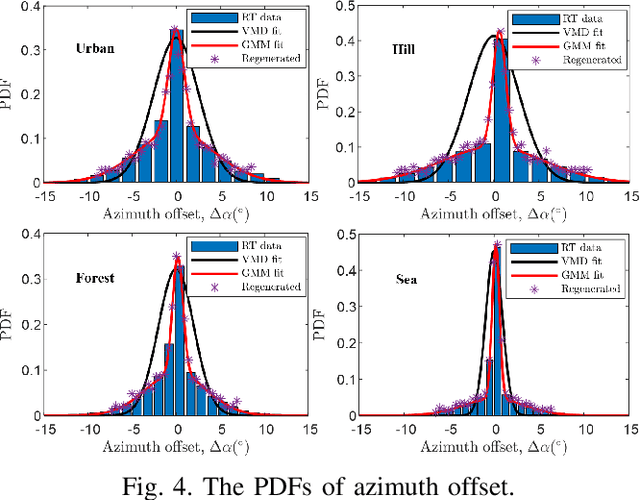
Abstract:Unmanned aerial vehicle (UAV) aided millimeter wave (mmWave) technologies have a promising prospect in the future communication networks. By considering the factors of three-dimensional (3D) scattering space, 3D trajectory, and 3D antenna array, a non-stationary channel model for UAV-to-vehicle (U2V) mmWave communications is proposed. The computation and generation methods of channel parameters including interpath and intra-path are analyzed in detail. The inter-path parameters are calculated in a deterministic way, while the parameters of intra-path rays are generated in a stochastic way. The statistical properties are obtained by using a Gaussian mixture model (GMM) on the massive ray tracing (RT) data. Then, a modified method of equal areas (MMEA) is developed to generate the random intra-path variables. Meanwhile, to reduce the complexity of RT method, the 3D propagation space is reconstructed based on the user-defined digital map. The simulated and analyzed results show that the proposed model and generation method can reproduce non-stationary U2V channels in accord with U2V scenarios. The generated statistical properties are consistent with the theoretical and measured ones as well.
 Add to Chrome
Add to Chrome Add to Firefox
Add to Firefox Add to Edge
Add to Edge